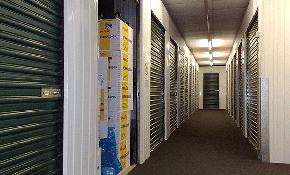 Matthew Marcus, PE, RG
Matthew Marcus, PE, RG
It’s winter time, and all that owners or developers have on their minds is how snow or icy conditions could affect properties. For example, the possibility of frozen pipes in properties that you own or having concerns about snow storms shutting down your redevelopment projects. While employing winter preparedness for new and existing properties, make sure you are considering all the seasonal changes that could affect your portfolio, most especially those geological phenomena that you may not even know about. One of these occurrences, only present in the late summer months in the south west, are haboobs. If you’ve never heard of a haboob or what steps can be taken to reduce your risk on a property located in these areas, here is a quick rundown.
Haboobs, or sand storms, are an underrated weather hazard. According to the National Weather Service in 2016, blowing dust is the 3rd deadliest weather phenomenon in Arizona (behind heat and flooding). In the major southwestern United States cities of Phoenix, Las Vegas, as well as in other communities in the desert regions of the world, dust storms are an important geologic phenomenon that create impressive scenery, have the potential to cause immense damage to property, and have the long-term effect of creating problems for new developments.
What is a ‘haboob’?
The term “haboob” originated in the Middle East, where these storms are more frequent than those in the South Western United States but are similar in intensity. These dramatic sand and dust storms are carried by fierce winds blowing over desert regions during the summer months, causing dust clouds as high as 10,000 feet that can travel at speeds as fast as 30-60 MPH. These bursts can be 30-100 miles wide and can travel as far as 100-200 miles, greatly diminishing visibility in only a matter of seconds.
Why does this happen?
Air-transported deposits are known as “aeolian” and the most well-know of these are sand dunes. However, in semi-desert areas such as the Sonoran and Mohave Deserts, much of the transported material is fine sand and silt. In the summer, the air on the ground is warmer than that in the air. When the cooler air in the atmosphere pushes under the warmer ground air, an inversion occurs. These inversions form under high-pressure systems and are the result of sinking air warming before descending. Stronger high-pressure systems force subsidence inversions toward lower altitudes, which makes them that much more effective at containing dust toward the surface.
What kinds of problems can this cause?
When these types of rapid changes in landscape occur on or near a city, the consequences can be significant, including car crashes, damage to property (especially swimming pool filters and roofs) and damage to exposed electrical and mechanical equipment. In addition to the obvious visibility impairment, the dust generated from this kind of weather hazard can cause significant respiratory impairment and has been linked to the spread of Valley Fever.
In the construction world, such rapid erosion can complicate site grading efforts, removing soil from stockpiles, lowering or raising site grades, and pulling fine material out of engineered spec material that could render it out of specification and un-usable. For projects in the southwest, contract provisions should note that the contractor is responsible for protecting grades and stockpiles from sandstorm events, as return trips for additional grading, or the sudden need for site import can add significant change orders to the site.
What can I do to reduce my risk and plan for the possibility of this weather event?
A geotechnical investigation will be performed during the design process. Geotechnical engineers need to be aware of aeolian silt deposits, as they are the primary cause of hydro-collapse. Hydro-collapse can cause catastrophic damage to structures if deep wind blow silts are present on a site and not detected. They may support a structure while dry, but will instantaneously collapse upon wetting due to nearby storm basins, irrigation lines or leaky water lines.
Additionally, the design process should consider the volume loss of aeolian silt and sand deposits. For a site with mass grading, the material may compress 20% or more in volume upon wetting and compaction. If this is not considered, a site that appears to balance prior to construction could literally end up short by inches or feet.
Consult with an experienced geotechnical consultant to help you suggest measures to prevent serious damage to your property as well as creating solutions if you have already experienced a geological issue at your site.

















 Copyright © 2024 ALM Global, LLC. All Rights Reserved.
Copyright © 2024 ALM Global, LLC. All Rights Reserved.